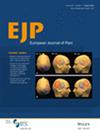It Is Time to Feel Better: How Temporal Information of Placebo Analgesia Affects Our Brain
Abstract
Background
Placebo and nocebo effects have been thoroughly studied during the last decades using pain models. Two characteristics have been investigated, namely the direction of the effects (i.e., placebo, amelioration of symptoms/nocebo, worsening of symptoms) and their magnitude (i.e., the robustness of the effects). Here, we propose an investigation of the placebo effects considering a third characteristic: time. We employed functional near-infrared spectroscopy (fNIRS), an emerging neuroimaging technique suitable for long-term monitoring and ecological experimental paradigms, to investigate cerebral cortices' activity through oxy-haemoglobin (O2Hb).
Method
42 healthy volunteers were randomised into three groups (No Expectations—NE, Placebo 5′—P5 and Placebo 20′—P20), placebo groups received different information on the timing of a cream's effectiveness (i.e., “the cream will work in 5/20 min”), while the NE group was said they were receiving an inert cream.
Results
Behavioural results showed that pain perception fluctuations mimicked verbal suggestions on cream effectiveness onset. Exploratory analyses of fNIRS signals seem to follow the same pattern: O2Hb levels varied by group and time course. In the NE group, no significant differences emerged. In the P5 group, frontal areas were engaged when placebo analgesia occurred soon after treatment, while later, both P5 and P20 showed sustained placebo-related activations alongside areas linked to time perception and memory.
Conclusion
This study proposes that the cortical network related to the placebo effect may be active and modulated by temporal information of cream effectiveness, as well as their behavioural respective.
Significance Statement
Implementing fNIRS technology, this study confirms previous behavioral findings and begins to show that cerebral networks respond and encode the temporal characteristics of placebo analgesia. Understanding whether the placebo effect can be switched on and off at specific time points through verbal suggestion could be harnessed when clinically beneficial, aligning its timing with that of pharmacological action, especially for drugs with delayed onset, to ensure continuous pain relief, reduce drug intake, and enhance patient comfort.


 求助内容:
求助内容: 应助结果提醒方式:
应助结果提醒方式:


